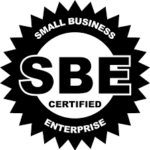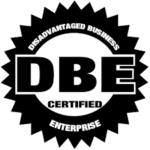Introduction: Two Worlds, One City

The Ravenel Bridge is more than a feat of engineering—it’s a symbol. For my company, it’s a daily reminder that the purpose of bridges is to connect, not divide. Its sweeping lines and graceful span capture the essence of what strategy should do: link people, communities, and potential. Strategy, at its highest function, is a bridge—one that spans divides, closes gaps, and builds shared futures.
In Charleston, South Carolina, where you launch your business can be just as defining as how you launch it. Across the Cooper River in the affluent suburb of Mt. Pleasant, the Harbor Entrepreneur Center caters to high-growth startups with sleek offices and pitch-perfect programming. Meanwhile, on the other side of the city, the Opportunity Center in North Charleston quietly builds generational change by empowering overlooked entrepreneurs in underinvested communities. Both centers fuel Charleston’s innovation ecosystem, but their missions, demographics, and membership models reveal a profound—and largely unspoken—divide.
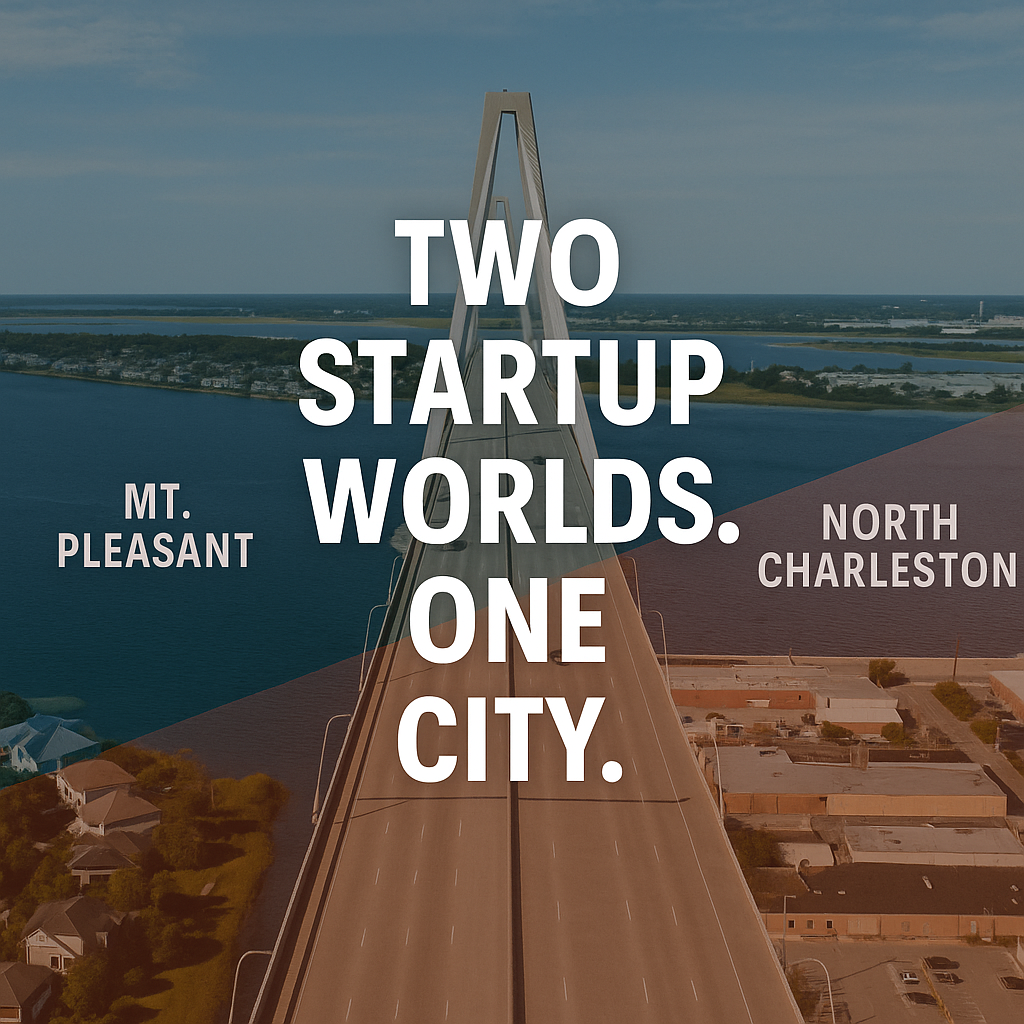
This article explores those differences, not to criticize either model, but to spark a larger conversation: Can Charleston bridge its entrepreneurial ecosystem across race, class, and zip code?
Mission & Purpose

The Harbor Entrepreneur Center positions itself as a collision hub for founders. Established in 2013, it’s best known for its selective accelerator, intimate Forum groups, and curated events for high-potential startups. Its goal is to accelerate ventures that are on the cusp of investment and scale, with programming tailored to investor pitches, tech innovation, and venture growth.
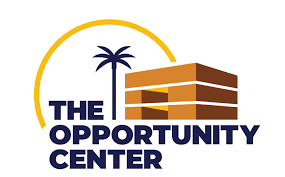
The Opportunity Center, launched in 2022 in partnership with SCACED and other community-focused nonprofits, operates with a different mandate: equity. Its Business Success Center helps early-stage entrepreneurs, many of whom are women, Black, or from low-wealth backgrounds, build stability before scale. With a mission to close the racial wealth gap and revitalize economic potential in historically underserved communities, it prioritizes inclusion over selection.
| Feature | Harbor Entrepreneur Center | Opportunity Center |
|---|---|---|
| Year Founded | 2013 | 2022 |
| Location | Mt. Pleasant | North Charleston |
| Square Footage | ~22,000+ sq ft | ~31,000 sq ft |
| Access Model | Selective, application-based | Open access, low barrier |
| Monthly Cost | Forum: $2,850/year | $1200/year |
| Client Focus | High-growth, tech-centric | Community-based, minority-owned |
| Demographic Context | 90%+ white, affluent | 47% Black, high-poverty zip codes |
| Programming | Accelerator, Forum, PROPEL | Business Success Center, legal aid, financial literacy |
Facilities & Features
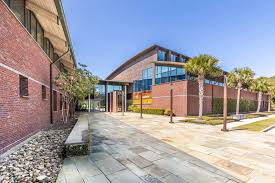
The Harbor occupies a polished campus in Mt. Pleasant: 22,000+ square feet, 56 private offices, dozens of hot desks, and seven high-end conference rooms. Members enjoy 24/7 access, outdoor workspaces, networking events, and amenities that mirror those found in a Silicon Valley incubator.
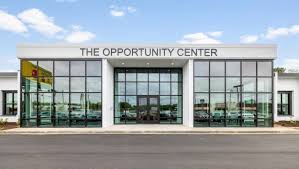
The Opportunity Center sits in a revitalized retail space on Rivers Avenue in North Charleston. With 31,000 square feet, it offers coworking, training spaces, secure business mailing services, and affordable access to legal, financial, and land ownership counseling. While less opulent, it is rich in purpose—designed specifically for entrepreneurs who have historically been excluded from polished innovation hubs.
Membership Models: Exclusivity vs. Accessibility
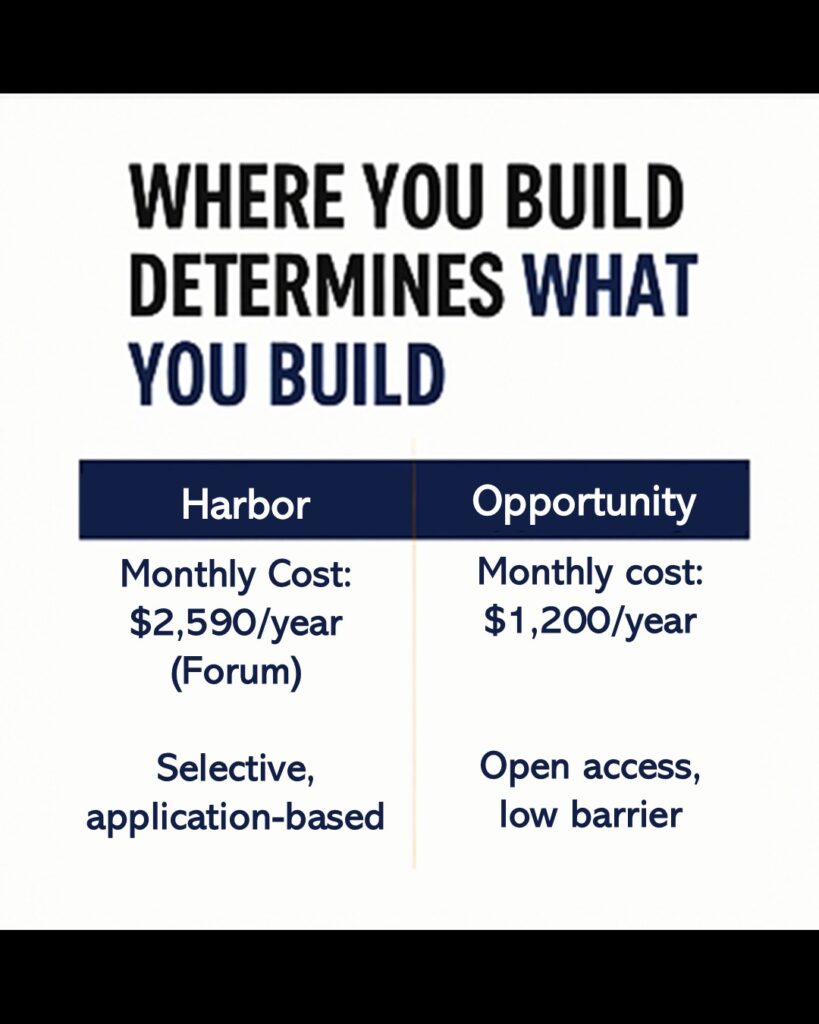
Harbor’s access is tiered and selective. The coveted Accelerator program only accepts 10–15 companies per year through a rigorous application process that includes pitch deck submission and growth potential vetting. Forum groups require member approval and carry a $2,850 annual fee. Even its workspace memberships favor companies that align with Harbor’s vision of scale and high-growth potential.
The Opportunity Center offers flat, transparent pricing: $100/month with a one-time $25 access fee. No pitch deck. No vetting. Just a commitment to build a business. Its goal is to remove structural barriers, not add new gates. It is purposefully inclusive, targeting early-stage founders who might never make it past a traditional accelerator’s filters.
| Criteria | Harbor | Opportunity Center |
| Pitch Deck Required | ✅ Yes | ❌ No |
| Application Process | ✅ Competitive | ❌ None |
| Membership Cap | ✅ Limited Cohorts | ❌ Open to All |
| Target Stage | 🚀 Scale-Ready | 🌱 Idea to Micro-Biz |
| Monthly Cost | 💰 Varies ($2.8K/year Forum) | 💵 $100/month |
| Diversity Screening | ❌ Not Required | ✅ Built-In Mission |
Participant Demographics
Demographic realities further distinguish the two. Mt. Pleasant’s median income far exceeds $90,000, with over 90% of the population identifying as white. Harbor’s founders typically reflect this: mid-career professionals, often with prior experience or family capital, seeking to scale tech-forward ventures.
In contrast, North Charleston is 47% African American and includes some of the city’s most economically distressed census tracts, where median household income ranges from $23,000 to $30,000. The Opportunity Center’s entrepreneurs often juggle work, caregiving, and community obligations while building their ventures. Many are first-time business owners and face systemic barriers like limited access to credit, generational wealth gaps, and educational inequities.
| Feature | Harbor (Mt. Pleasant) | Opportunity Center (North Charleston) |
| Community Wealth | High income suburb, median income >> $55K | $23K–$30K median incomes in surrounding Opportunity Zones |
| Poverty Levels | Negligible | 28–41%, significantly above state average |
| Education Levels | High school and college completion common | 66–73% with high school diploma |
| Racial Composition | Skewed less diverse (predominantly white) | ~47% Black, ~45% white, ~8% other/multiracial; 10% Hispanic |
| Entrepreneur Profile | Investor-ready, high-growth, tech-minded founders | Early-stage, community-focused founders (minority/women included) |
Strategic Takeaways: Two Models, One Ecosystem
Harbor represents Charleston’s polished, investor-facing innovation economy. The Opportunity Center embodies grassroots transformation. One nurtures acceleration; the other cultivates access.
But both are necessary.
The challenge—and opportunity—is to build a bridge between them. What if Harbor shared mentors with Opportunity Center founders? What if Opportunity Center graduates were fast-tracked into Harbor’s Accelerator? What if funders required inclusive metrics for continued grant support?
Conclusion: Charleston’s Future Is Connected
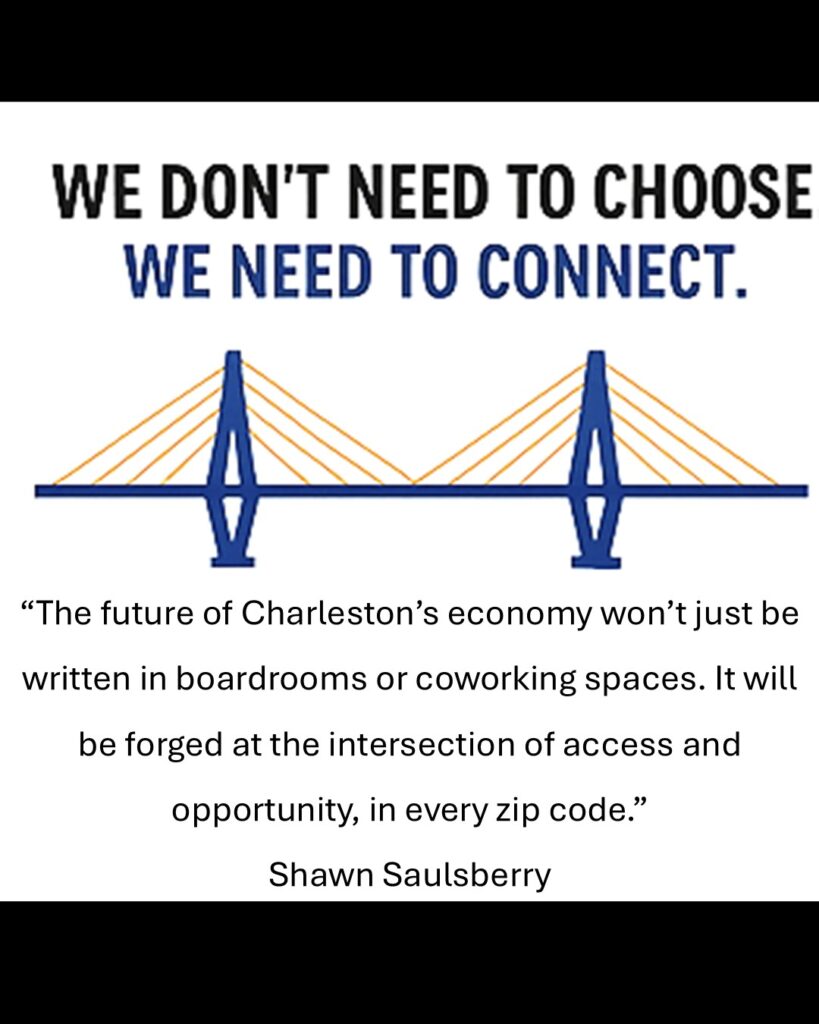
The Charleston metro doesn’t need to choose between elite acceleration and inclusive access. It can—and must—invest in both. By linking its two entrepreneurial poles, Charleston can evolve from a fragmented innovation landscape into an integrated, resilient ecosystem.
The future of Charleston’s economy won’t just be written in boardrooms or coworking spaces. It will be forged at the intersection of access and opportunity, in every zip code.
Let’s build that bridge.


